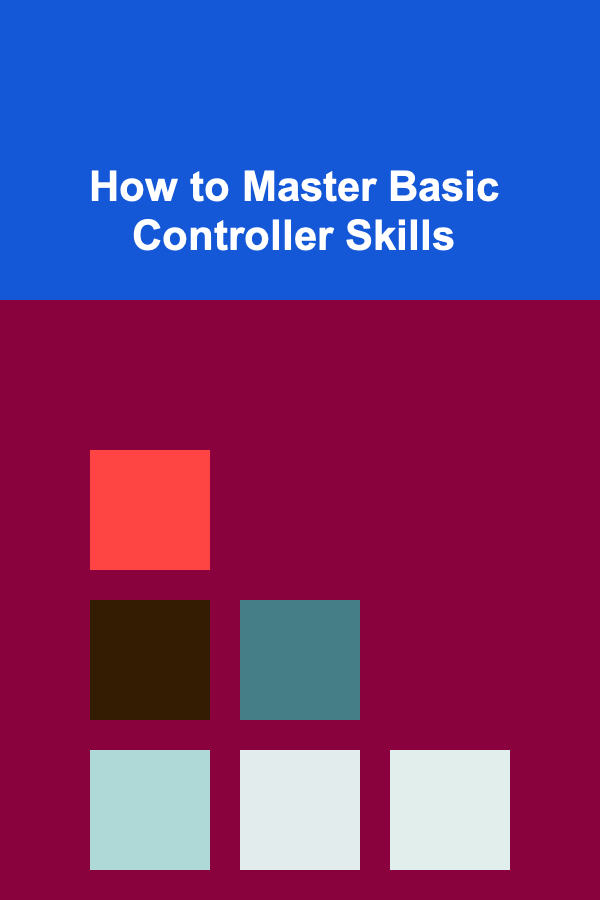
How to Train for a Powerlifting Meet: A Comprehensive Guide
ebook include PDF & Audio bundle (Micro Guide)
$12.99$6.99
Limited Time Offer! Order within the next:

Powerlifting is a strength sport consisting of three attempts at a maximum weight on three lifts: squat, bench press, and deadlift. Training for a powerlifting meet is a meticulous process that requires careful planning, diligent execution, and constant self-assessment. It's far more than just lifting heavy things; it's about optimizing your strength, technique, and mental fortitude to perform your absolute best on the platform. This comprehensive guide will walk you through the key aspects of powerlifting meet preparation, from initial assessments and program design to peaking strategies and meet day execution.
I. Assessment and Goal Setting
Before diving into a training program, it's crucial to establish a solid foundation through thorough self-assessment and realistic goal setting. This process will inform your training plan and provide a benchmark for tracking progress.
A. Current Strength Level
The first step is to accurately assess your current strength levels in the squat, bench press, and deadlift. This isn't about ego lifting; it's about finding your true maximums (or close approximations) with good form. There are several ways to achieve this:
- 1 Rep Max (1RM) Testing: The most direct method is to attempt a 1RM for each lift. This should be done cautiously, with a spotter, after proper warm-up and incremental weight increases. Start with a weight you can comfortably perform for several reps, then gradually increase the weight, taking adequate rest between attempts. The goal is to find the heaviest weight you can successfully lift for one repetition with good form. Only perform this when you are in good health and have been lifting consistently.
- Rep Max Estimations: If you're uncomfortable testing your 1RM directly, you can estimate it based on your performance with submaximal weights. For example, if you can bench press 225 lbs for 5 reps, you can use a 1RM calculator (available online) to estimate your 1RM. However, these estimations are less accurate than direct testing, especially as rep ranges increase. For best accuracy, use rep ranges between 3-6 reps.
- Review Past Performance: Look back at your training logs and identify your previous maximum attempts. Analyze the videos of your lifts (if available) to evaluate your form and identify any technical weaknesses. This historical data can provide valuable insights into your strengths and weaknesses.
B. Identifying Weaknesses
Pinpointing your weaknesses is paramount to designing an effective training program. Weaknesses can manifest in various forms:
- Specific Points in the Lift: Are you struggling with the bottom of your squat? Do you have difficulty locking out your bench press? Are you failing to break the weight off the floor during your deadlift? Identifying the specific sticking points in each lift is crucial for selecting appropriate accessory exercises. For example, struggling at the bottom of the squat might indicate weak quads or glutes, while a lockout issue on the bench press might point to weak triceps.
- Muscular Imbalances: Are your quads significantly stronger than your hamstrings? Is your chest disproportionately stronger than your back? Addressing muscular imbalances is important for preventing injuries and improving overall performance. Weak glutes and hamstrings can lead to knee instability during the squat, while a weak back can compromise your bench press.
- Technical Flaws: Are you rounding your back during your deadlift? Are you flaring your elbows excessively during your bench press? Identifying and correcting technical flaws is essential for maximizing efficiency and preventing injuries. These flaws can often be identified by watching videos of your lifts or seeking feedback from a qualified powerlifting coach.
C. Setting Realistic Goals
Setting achievable goals is critical for maintaining motivation and ensuring progress. Goals should be SMART: Specific, Measurable, Achievable, Relevant, and Time-bound.
- Specific: Instead of saying "I want to get stronger," define a specific goal, such as "I want to increase my squat by 20 lbs."
- Measurable: Define how you will track your progress. This could involve tracking your 1RM, rep ranges, or overall training volume.
- Achievable: Set goals that are challenging but realistic based on your current strength level and training experience. A beginner lifter might see larger gains than an experienced lifter.
- Relevant: Ensure your goals align with your overall aspirations in powerlifting. Are you aiming for a personal best, qualifying for a specific competition, or achieving a certain ranking?
- Time-bound: Set a timeframe for achieving your goals. For example, "I want to increase my squat by 20 lbs in the next 12 weeks."
Consider setting both short-term (weekly or monthly) and long-term (meet-specific) goals. Short-term goals provide immediate feedback and keep you motivated, while long-term goals keep you focused on the bigger picture.
II. Program Design
The core of powerlifting training is a well-structured program designed to progressively overload your muscles and improve your technique. There are many different approaches to powerlifting programming, but most effective programs share some common characteristics.
A. Training Frequency
The optimal training frequency depends on your experience level, recovery capabilities, and individual preferences. However, a general guideline is to train each of the three main lifts (squat, bench press, deadlift) at least twice per week.
- Beginner Lifters: Can often benefit from training each lift three times per week due to their greater recovery capacity.
- Intermediate Lifters: Typically benefit from training each lift twice per week, with variations in intensity and volume.
- Advanced Lifters: May train each lift only once per week, focusing on higher intensity and specialized accessory work. However, some advanced lifters also employ higher frequency approaches.
B. Volume and Intensity
Volume refers to the total amount of work performed in a training session (sets x reps x weight), while intensity refers to the percentage of your 1RM used for a given set. These two variables are inversely related; as intensity increases, volume typically decreases, and vice versa.
- High Volume, Low Intensity: This approach is often used during the early stages of a training cycle to build a solid foundation of strength and hypertrophy. It involves performing multiple sets of moderate reps (e.g., 3-5 sets of 8-12 reps) with weights typically ranging from 60-75% of your 1RM.
- Low Volume, High Intensity: This approach is typically used closer to a meet to peak strength. It involves performing fewer sets of lower reps (e.g., 3-5 sets of 1-3 reps) with weights ranging from 85-95% of your 1RM.
- Periodization: The most effective powerlifting programs employ periodization, which involves systematically varying volume and intensity over time to optimize strength gains and prevent plateaus. Linear periodization involves a gradual increase in intensity and a gradual decrease in volume, while undulating periodization involves more frequent fluctuations in volume and intensity.
C. Exercise Selection
Exercise selection should be based on your individual weaknesses and goals. The primary focus should be on the three main lifts (squat, bench press, and deadlift), but accessory exercises are also crucial for building supporting muscle groups and addressing specific weaknesses.
- Main Lifts: Variations of the squat, bench press, and deadlift should be included in your program to improve technique and address specific sticking points. Examples include front squats, pause squats, incline bench press, close-grip bench press, Romanian deadlifts, and deficit deadlifts.
- Accessory Exercises: These exercises target specific muscle groups that are important for supporting the main lifts. Examples include leg press, lunges, hamstring curls, rows, pull-ups, overhead press, and triceps extensions. Focus on exercises that directly contribute to improving your performance on the competition lifts.
- Addressing Weaknesses: If you're struggling with the bottom of your squat, include exercises like box squats, pause squats, and front squats. If you're struggling with the lockout of your bench press, include exercises like close-grip bench press, triceps extensions, and board presses. If you're struggling to break the weight off the floor during your deadlift, include exercises like deficit deadlifts, Romanian deadlifts, and good mornings.
D. Rep Ranges and Set Structures
Rep ranges and set structures should be chosen based on the training phase and your individual goals.
- Hypertrophy Phase: Focus on higher rep ranges (8-12 reps) and moderate sets (3-5 sets) to build muscle mass.
- Strength Phase: Focus on moderate rep ranges (3-5 reps) and moderate to high sets (3-5 sets) to increase strength.
- Power Phase: Focus on lower rep ranges (1-3 reps) and lower sets (3-5 sets) to develop power and peaking strength.
- Deload Weeks: Deload weeks are crucial for allowing your body to recover and prevent overtraining. During deload weeks, reduce your volume and intensity by approximately 50%.
E. Sample Program Structure (12-Week Cycle)
This is a sample program structure for a 12-week training cycle. It's important to note that this is just a template, and you should adjust it based on your individual needs and goals.
- Weeks 1-4: Hypertrophy Phase (High Volume, Low Intensity):
- Squat: 3-5 sets of 8-12 reps @ 60-75% 1RM
- Bench Press: 3-5 sets of 8-12 reps @ 60-75% 1RM
- Deadlift: 1-3 sets of 5-8 reps @ 60-75% 1RM
- Accessory Exercises: 3-4 sets of 8-12 reps
- Weeks 5-8: Strength Phase (Moderate Volume, Moderate Intensity):
- Squat: 3-5 sets of 3-5 reps @ 75-85% 1RM
- Bench Press: 3-5 sets of 3-5 reps @ 75-85% 1RM
- Deadlift: 1-3 sets of 3-5 reps @ 75-85% 1RM
- Accessory Exercises: 3-4 sets of 6-10 reps
- Weeks 9-11: Power Phase (Low Volume, High Intensity):
- Squat: 3-5 sets of 1-3 reps @ 85-95% 1RM
- Bench Press: 3-5 sets of 1-3 reps @ 85-95% 1RM
- Deadlift: 1-3 sets of 1-2 reps @ 85-95% 1RM
- Accessory Exercises: 2-3 sets of 6-8 reps (focus on technique)
- Week 12: Deload Week:
- Reduce volume and intensity by approximately 50%.
- Focus on active recovery and mobility.
III. Peaking and Tapering
Peaking and tapering are critical for maximizing your performance on meet day. The goal is to reduce fatigue while maintaining (or even slightly increasing) strength. This is achieved through a combination of reduced volume and strategic intensity management in the weeks leading up to the competition.
A. Reducing Volume
The primary focus of the taper is to reduce your overall training volume. This allows your body to recover from the accumulated fatigue of the preceding training cycle. Reduce your sets and reps gradually over the final 2-3 weeks leading up to the meet.
B. Maintaining Intensity
While volume should be reduced, it's important to maintain intensity to avoid detraining. You should still be performing some sets at or near your maximum weights, but with significantly less volume. This will help you maintain your strength and confidence.
C. Tapering Strategies
There are several different tapering strategies you can use:
- Linear Taper: This involves a gradual reduction in volume over the final 2-3 weeks.
- Step Taper: This involves a sudden reduction in volume, followed by a period of maintenance.
- Exponential Taper: This involves a more rapid reduction in volume initially, followed by a slower reduction in the final days leading up to the meet.
D. Sample Peaking Schedule (2 Weeks Before Meet)
- Week 1: Reduce volume by 30-50% compared to the previous week. Maintain intensity by performing 1-2 sets of 1-2 reps at 90-95% of your 1RM.
- Week 2 (Meet Week): Reduce volume by 50-70% compared to the previous week. Perform only light warm-up sets in the days leading up to the meet. Focus on rest, nutrition, and mental preparation. Consider a very light single at around 70% of your projected opener a few days before the meet to keep your nervous system primed.
IV. Nutrition and Recovery
Proper nutrition and recovery are just as important as your training program. Without adequate fuel and rest, your body won't be able to recover and adapt to the demands of training.
A. Caloric Intake
You need to consume enough calories to support your training and recovery. A general guideline is to consume 16-18 calories per pound of bodyweight. However, this can vary depending on your individual metabolism and activity level. Track your calorie intake and adjust as needed based on your weight and performance.
B. Macronutrient Ratios
A balanced macronutrient ratio is crucial for optimizing performance. A common recommendation is:
- Protein: 1-1.2 grams per pound of bodyweight. Protein is essential for muscle repair and growth.
- Carbohydrates: 2-3 grams per pound of bodyweight. Carbohydrates are the primary source of energy for your muscles.
- Fats: 0.4-0.6 grams per pound of bodyweight. Fats are important for hormone production and overall health.
C. Hydration
Staying hydrated is essential for optimal performance. Drink plenty of water throughout the day, especially before, during, and after training. Aim for at least a gallon of water per day.
D. Sleep
Sleep is crucial for recovery and muscle growth. Aim for 7-9 hours of quality sleep per night. Establish a consistent sleep schedule and create a relaxing bedtime routine.
E. Active Recovery
Active recovery involves performing light activities, such as walking, stretching, or yoga, to promote blood flow and reduce muscle soreness. Active recovery can be particularly beneficial during deload weeks.
F. Supplementation
While supplements are not essential, some can provide a slight edge in performance. Some commonly used supplements in powerlifting include:
- Creatine: Improves strength and power output.
- Beta-Alanine: Improves muscular endurance.
- Caffeine: Enhances focus and reduces perceived exertion.
- Protein Powder: Helps to meet your protein needs.
V. Mental Preparation
Mental preparation is often overlooked, but it's just as important as physical preparation. A strong mental game can help you perform your best under pressure.
A. Visualization
Visualization involves mentally rehearsing your lifts. Imagine yourself successfully performing each lift with perfect form. This can help build confidence and reduce anxiety.
B. Positive Self-Talk
Replace negative thoughts with positive affirmations. Remind yourself of your strengths and accomplishments. Focus on what you can control and avoid dwelling on what you can't.
C. Managing Anxiety
Anxiety is a normal part of competition. However, excessive anxiety can impair performance. Use relaxation techniques, such as deep breathing or meditation, to manage your anxiety. Establish a pre-lift routine that helps you focus and calm your nerves.
D. Developing a Meet Day Strategy
Plan out your meet day strategy in advance. Know your opening attempts, your second attempts, and your potential third attempts. This will help you stay focused and make smart decisions on the platform. Consider different scenarios and how you will react to them. Will you change your attempts if you bomb out on an earlier lift? Having these plans in place will alleviate stress on the day.
VI. Meet Day Execution
Meet day is the culmination of all your hard work. Follow your planned strategy, stay focused, and trust your training.
A. Warm-up Protocol
Follow a consistent warm-up protocol for each lift. Start with light cardio and dynamic stretching, followed by progressively heavier warm-up sets. Don't overdo it with the warm-ups; the goal is to prepare your body for the lift, not to exhaust yourself.
B. Attempt Selection
Choose your opening attempts conservatively. You want to make sure you successfully complete your first attempt to build confidence and get on the board. Choose your second and third attempts based on how you felt on your previous attempts and the overall meet situation. Don't be afraid to adjust your attempts based on feedback from your coach.
C. Following the Rules
Be familiar with the rules of the competition. Know the requirements for each lift and avoid making any technical errors that could result in a disqualification.
D. Staying Focused
Stay focused on the task at hand. Avoid distractions and concentrate on your breathing and technique. Trust your training and believe in yourself.
E. Listening to Your Coach
If you have a coach, listen to their advice. They can provide valuable feedback and help you make smart decisions on the platform.
VII. Post-Meet Analysis
After the meet, take some time to analyze your performance. What went well? What could you have done better? Use this information to inform your future training.
A. Reviewing Your Lifts
Watch videos of your lifts and analyze your technique. Identify any areas where you can improve. Were your openers too heavy or too light? Did you make any technical errors?
B. Evaluating Your Training Program
Did your training program effectively prepare you for the meet? Did you peak at the right time? Were your volume and intensity appropriate? Make adjustments to your training program based on your analysis.
C. Setting New Goals
Set new goals for your next meet. Use the lessons you learned from this meet to guide your future training. Powerlifting is a journey, and there's always room for improvement.
VIII. Conclusion
Training for a powerlifting meet is a challenging but rewarding experience. By following a structured program, prioritizing nutrition and recovery, and developing a strong mental game, you can maximize your potential and achieve your goals on the platform. Remember that consistency, patience, and a commitment to continuous improvement are key to long-term success in powerlifting. Good luck, and happy lifting!

How To Create an E-commerce Business from Scratch
Read More
How to Make Money Online as a Mascot Designer: 10 Actionable Ideas
Read More
How to Use Book Clubs as a Way to Organize and Read
Read More
The Art of Persuasion in Retail: Essential Skills for a Successful Career as a Retail Sales Associate
Read More
How to Set Up a Blockchain Node
Read More
How to Master Basic Controller Skills
Read MoreOther Products

How To Create an E-commerce Business from Scratch
Read More
How to Make Money Online as a Mascot Designer: 10 Actionable Ideas
Read More
How to Use Book Clubs as a Way to Organize and Read
Read More
The Art of Persuasion in Retail: Essential Skills for a Successful Career as a Retail Sales Associate
Read More
How to Set Up a Blockchain Node
Read More